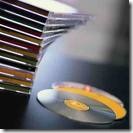 Do you has the experience a computer crash or data loss? We know that once it happens there is very little we can do about it. Just can pay a data recovery company hundres or thousands of dollars to recover the data or lose the data forever.
Do you has the experience a computer crash or data loss? We know that once it happens there is very little we can do about it. Just can pay a data recovery company hundres or thousands of dollars to recover the data or lose the data forever.
What should you do before a computer crash?
Find all of the documents, pictures and other files that are important to you and move them to a central location on your computer. Having documents on your desktop and root folder of your C drive and all kinds of miscellaneous folders is not only a headache when you try to find something, but it will make backing up even harder and waste a lot of space.
The most important part of preparing for a computer crash is to save copies of your work on more than just your single hard drive. You can backup your data by Manual Backup, Backup Software or Backup Media.
Manual Backup.
This is the cheapest option in the short run. However, if you forget to make a regular backup yo u will loose some of your work. This option will likely also take you more time.
Backup Software
You can also choose from several pieces of software that will automate the process and make it much simpler and faster. The big advantage for this is that you can set backups to run at varying frequencies and at times while you aren’t using the computer. See the resource area for several backup solutions.
Backup Media
Regardless of how you backup your computer files, you must have a place to back up your files. You can look for online backup websites that will give you so much space to use for free or a small price. The problem with this is that it can be very slow depending on the speed of your ISP. The biggest advantage however, is that they are likely to have backup servers themselves. You’re next likely choice is to buy a second hard drive. You can buy an internal or external drive. This will give you the quickest way to backup your files on a regular basis. Finally, you can also prepare for a crash by saving your files onto CD or DVD. You will need a CD or DVD writer but these are common on most computers. Optical media like CDs or DVDs however, have a limited lifetime and can get scratched or lost. This is a good secondary backup source but shouldn’t be your own or primary source. A portable USB drive is a very good place to save files to also, but it has the same risks of an optical device. It can be lost or broken.
Regularly check your backups to make sure they will work when you use them. You can do this by opening your files and make sure they work but if you are using a program test it out, make sure you protect your files in at least one other place in case the backup software has a problem and corrupts your files.
Make a list of all the software you have installed on your computer. Find this software and make sure you have a working copy and have the serial number. This is also a good idea to make a backup of your programs.

